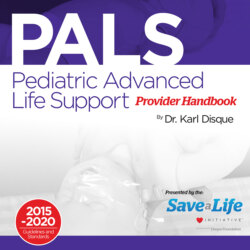Читать книгу Pediatric Advanced Life Support (PALS) Provider Handbook - Dr. Karl Disque - Страница 5
1
INTRODUCTION TO PALS
ОглавлениеThe goal of Pediatric Advanced Life Support (PALS) is to save a life. For a child or infant experiencing serious injury or illness, your action can be the difference between life and death. PALS is a series of protocols to guide responses to life-threatening clinical events. These responses are designed to be simple enough to be committed to memory and recalled under moments of stress. PALS guidelines have been developed from thorough review of available protocols, patient case studies, and clinical research; and they reflect the consensus opinion of experts in the field. The gold standard in the United States and many other countries is the course curriculum published by the Liaison Committee on Resuscitation (ILCOR). Approximately every five years the ILCOR updates the guidelines for Cardiopulmonary Resuscitation (CPR) and Emergency Cardiovascular Care (ECC). This handbook is based on the most recent ILCOR publication of PALS and will periodically compare the previous and the new recommendations for a more comprehensive review.
Take Note
Any provider attempting to perform PALS is assumed to have developed and maintained competence with not only the materials presented in this handbook, but also certain physical skills, including Basic Life Support (BLS) interventions. Since PALS is performed on children and infants, PALS providers should be proficient in BLS for these age groups. While we review the basic concepts of pediatric CPR, providers are encouraged to keep their physical skills in practice and seek additional training if needed.
Proper utilization of PALS requires rapid and accurate assessment of the child or infant’s clinical condition and selection and delivery of the appropriate intervention for the given situation. This not only applies to the provider’s initial assessment of a child or an infant in distress, but also to the reassessment throughout the course of treatment utilizing PALS guidelines.
PALS protocols assume that the provider may not have all of the information needed from the child or the infant or all of the resources needed to properly use PALS in all cases. For example, if a provider is utilizing PALS on the side of the road, they will not have access to sophisticated devices to measure breathing or arterial blood pressure. Nevertheless, in such situations, PALS providers have the framework to provide the best possible care in the given circumstances. PALS algorithms are based on current understanding of best practice to deliver positive results in life-threatening cases and are intended to achieve the best possible outcome for the child or the infant during an emergency.
